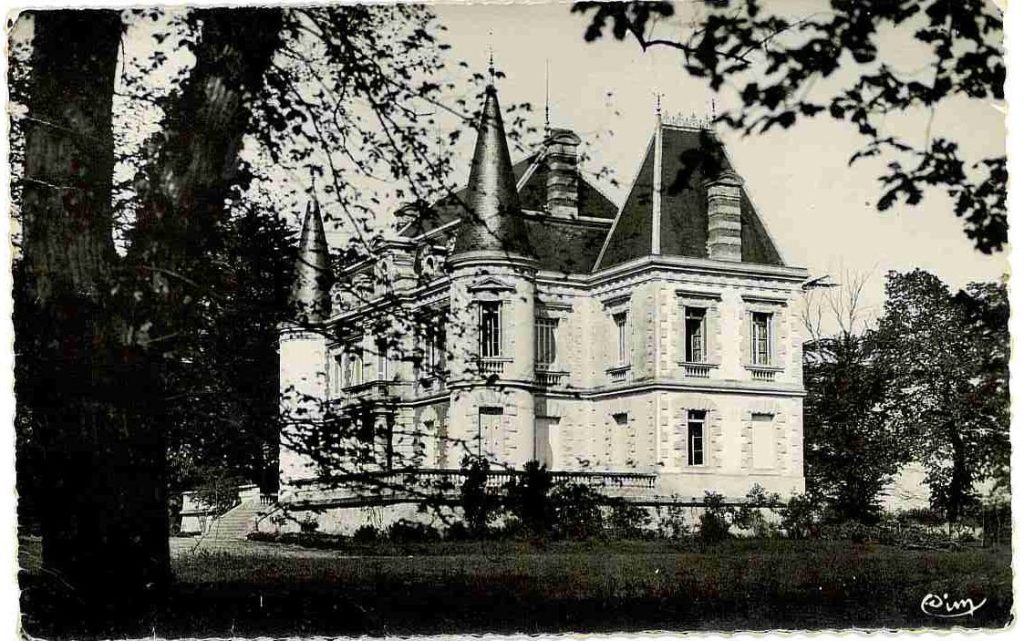Château Lamothe-Bergeron:
a Bordeaux vineyard where history,
Terroir and rebirth come together
For centuries, Château Lamothe-Bergeron has embodied the winegrowing history of the Médoc. Situated between Margaux and Saint-Julien, this Cru Bourgeois Supérieur ranked Bordeaux winery, has been shaped by visionary figures and bold transformations, while always remaining faithful to its roots. From medieval origins all the way to today’s commitment to sustainable viticulture, Lamothe-Bergeron staying true to its history, local identity and responsible innovation– a living story, much like Médoc wines, where each generation has left its imprint.


The History of Château Lamothe-Bergeron in the Médoc Vineyards

From the Middle Ages to the Enlightenment
Château Lamothe-Bergeron’s story is entwined in the rich viticultural history of the Médoc. The estate’s origins date back to the Middle Ages, when it belonged to the Captal de Buch, a influential lord of Bordeaux. Legend says that he once sold ten harvests of Médoc wine in advance to pay his ransom, proof of the vineyard’s value even centuries ago.
In the 18th century, the property took a decisive turn with Jacques de Bergeron, a councillor in the Bordeaux Parliament and a true Enlightenment figure. Fascinated by agronomy, he carried out pioneering research on vine diseases, yields, and grafting. His innovative “Bergeron grafting method” became a benchmark in viticulture, leaving a legacy that still resonates in Bordeaux wineries today.
14 ème siècle
The estate was owned by the Captal de Buch and was
already making wine. ‘It is said that when the Captal
was taken prisoner by Duguesclin, he sold ten harvests
of his wine (which was very highly esteemed by the
English then occupying Bordeaux) in advance to pay
the heavy ransom being demanded of him’, as the 1898
edition of Féret describes.
What was the estate like in the Middle Ages? It is hard
to imagine, because all that remains of the first chateau
(which was in fact more like a fortress) is a plan drawn
by Léo Drouyn in the 19th century.
15-18 ème siècle
At the end of 18th century the estate was owned by
Nicolas de Lauste. It was passed down from generation
to generation as far as its most famous descendant,
François Jacques Marie de Bergeron (1760-1810),
commonly known as Jacques de Bergeron.
1810
An iconic owner, Jacques de Bergeron died in 1810 at
the age of fifty, leaving behind him an estate bursting
with promise.
1868
A new chateau appeared, a true architectural gem
reflecting the style of the Second French Empire. It was
built under Abdon d’Armana (1824-1906), husband of
Caroline Le Quien de La Neufville, who was a niece
by marriage of the last Bergeron. In the same year, the
estate was named in Féret as one of the top examples
in the area.
1932
Lamothe-Bergeron was included in the first
Cru Bourgeois classification.
1957
The chateau was partially destroyed in a fire. It would be
restored in the 1960s.
1970-1980
The chateau passed into the hands of the Mestrezat
family trading house in the early 1970s. The vineyards
grew in size. The 1980s saw the arrival of a new winery
and maturation facility.
2015
Following 18 months of work, the fully restored chateau
regained its former glory of the late 19th century. The
visitors’ route was opened. Lamothe-Bergeron became
a key Bordeaux wine tourism destination.
2019
The estate was acquired by CAPSSA pension fund in
November 2019. A long-term investment plan was put
in place. Initial efforts focussed on the vineyards, with
the aim of achieving new quality heights.
2021
Launch of the vineyard restructuring plan.
2024
First white grape harvest.




A Second French Empire Jewel in the Médoc.
In the 19th century, Abdon d’Armana, husband of Caroline Le Quien de La Neufville, commissioned the château that stands today. Completed in 1868, the castle is a perfect example of Second Empire architecture, with its turrets, ornate balconies and elegant façade.
With its elegant, tree-lined grounds, this French winery quickly became a landmark in the Médoc vineyards. The castle’s complete restoration in 2015 stayed true to its original style and restored it to all its former splendour. Since then, Château Lamothe-Bergeron has been a highlight of wine tours in Bordeaux, attracting history lovers, wine enthusiasts and travellers alike in search of an authentic
A Winegrowing Journey Across Centuries
From its first classification among the Crus Bourgeois in 1932, to its elevation as Cru Bourgeois Supérieur in 2020, Château Lamothe-Bergeron has long been recognised as a reference point amongst Bordeaux wineries. The vineyard has continued to grow through the years, particularly during the 1970s and 1980s when the owners, a Bordelaise wine merchant family, expanded the property and built new cellars.
A Living Heritage and a Vision for the Future
A Long-Term Governance Model
In 2019, the estate entered a new era with the CAPSSA: restructuring the vineyard, developing sustainable winegrowing practices, planting white grape varieties and investment in a next-generation vat house. Today, the estate continues its path guided by the same pursuit of excellence, firmly rooted in the Médoc terroir and open to the future of Bordeaux wine tourism.
A Médoc Vineyard Reborn
An extensive restructuring project began in 2021, including the replanting of 20 hectares (49 acres), drainage upgrades, and plot optimisation. These developments enhance the role of Cabernet Sauvignon and Petit Verdot, perfectly adapted to the evolving climate. Since 2024, a new white wine cellar has enriched the estate with fresh Médoc whites, adding a unique dimension to the experience of Bordeaux wine tours.
Sustainability at the Heart of the Estate
Certified High Environmental Value level 3 (HVE) and Terra Vitis, Château Lamothe-Bergeron is also committed to Bordeaux’s “Cultivons Demain” programme, aiming for its highest CSR label standard. The estate also prioritizes biodiversity protection, reduction of agricultural inputs, employee well-being, high-quality training, and visitor hospitality. At the heart of every choice is the value of people and the environment, reinforcing Château Lamothe-Bergeron’s reputation as a sustainable Bordeaux winery and a model for all Médoc vineyards.




NEWS
What’s happening at the château
Discover our latest events, press highlights, and awards celebrating the excellence and vitality of Château Lamothe-Bergeron.
